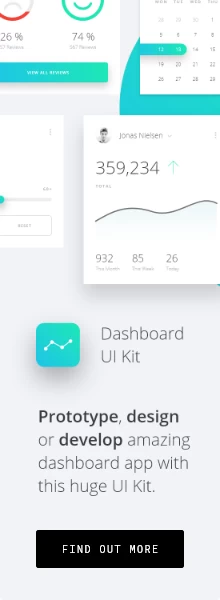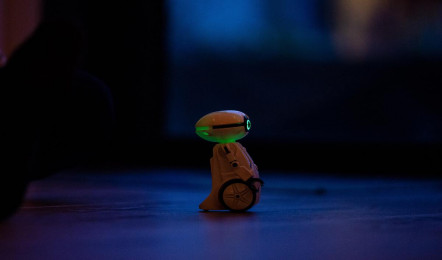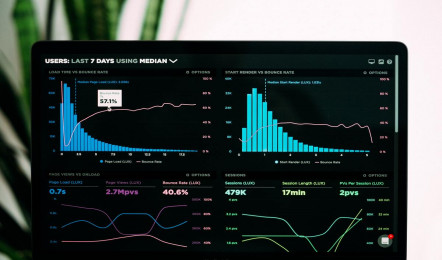5 Soft Skills UI/UX Designer Should Possess
Wed.28.10.2020 BY
While it’s true that, as a UI/UX designer, you need to be a good designer above all else, not everything relates to just pure designing. Being a good businessman in the 21st century requires you to possess certain soft skills that don’t necessarily correspond directly to your field of work. In order to be the best UI/UX designer, you might also take a look at this list of soft skills and see if you have them all developed. If so, we’re sure that you don’t have any issues with your clients, but if not, then maybe you could invest some time and try to elevate them to a higher level. These soft skills will definitely help you position yourself better on the market and will also help you collaborate with your clients in a more constructive and less time-wasting way.
Empathy
If you want to create a good UI/UX design, you first need to truly understand what the clients need. The best way to do so is to become a “user before other users” yourself. What this means is that, essentially, you should put yourself in your users’ shoes, think like them, act like them, and use the product the way they would. This is much easier said than done. After all, you’ve designed the interface in such a way that it’s extremely easy to use, how could anyone ever be confused about it? You should always keep in mind, however, that people come in all different shapes and sizes, which means that what you might find easy, others might find utterly confusing and complicated.
One way to communicate with your users is through surveys, user interviews, or usability tests. For instance, a good usability test does not focus on the product itself at all. It focuses on figuring out how the users use the product. How do they get from A to B? What irritates them, what makes them happy, which previous design choices you’ve made were good and which were poor? All this helps you understand your users. Always have in mind that, as a UX designer, you’re creating an experience. If your users like to use your product, that will boost sales. It’s that simple.
Collaboration
No matter how good you are, a team is only as good as its weakest member. What makes a good team is cooperation between the team members. Nobody is perfect, and everything can always be improved. Always consider your teammates’ input. Perhaps they can provide valuable insight into the design that you, as a designer, may have overlooked.
The other way around works as well. If you notice that the number of steps to execute a certain process can be reduced, then convey your thoughts to your colleagues. Collaborate, exchange ideas and thoughts, brainstorm as much as possible. Good ideas often come when you least expect them, so be open-minded and talk to your teammates as much as possible.
Be adaptive
This is something many people, not just UI/UX designers, suffer from. People, in most cases, don’t like change, and once you’ve created something that proves to be good, you may be reluctant to change it. But times change, and people change, and your users are bound to change too. A UI designed for an application ten years ago may just feel outdated in 2020.
This is not to say that you should jump on every bandwagon and change your design on a daily basis. It does, however, mean that you should refresh your product’s design every once in a while. If your product is doing well, it’s probably best to do this subtly, little by little, without ever making drastic moves. However, sometimes companies need to rebrand or ever relaunch products from scratch. If this is the case, you may want to approach such designs with a fresh perspective and try to make them as future proof as possible. Still, don’t fool yourself by thinking that your designs are flawless and that they’ll never need changing. Always be adaptive and think of the ways you can change your designs to increase the value.
Curiosity
Another skill that’s very valuable to have. Good UI/UX designers should always look for ways to improve their designs, but what happens if you don’t even notice that your design isn’t that good in the first place? Curiosity and market research come in handy here. If you can inspect your competitors and maybe see what makes them stand up, why the customers are choosing them, then you can, perhaps, implement some of those features into your own product.
If you’re curious and have that inner drive to always seek development and improvement, that you can be sure that your designs will be the best they can be. Therefore, always be on the hunt for improvements and always try to innovate as much as possible.
Lose your ego
Last but not least, there is your ego. While it’s necessary to have self-respect and to trust yourself and your business choices, sometimes you must also admit to yourself that your original design is flawed and that there are improvements to be had. This is especially the case if one of your, so-to-speak, subordinates points out the improvements.
Ego is one of the greatest enemies of product evolution. Designers must keep an open mind, and if that means taking suggestions from people with less experience, so be it. There must always come a time when the disciple defeats the master, and the moment that happens and the master takes the suggestions seriously, true collaboration and product development can happen. Long story short, don’t take yourself too seriously and accept that you’re not perfect. The sooner, the better.
Conclusion
As you can see, being a good UI/UX designer involves having skills other than purely technical. If, however, you manage to develop these soft skills, you’ll surely become a better designer than you already are, if not from the technical, then at least from the emotional, human standpoint. Everybody likes a warm person to work with, so why not put some effort into becoming such a person.




